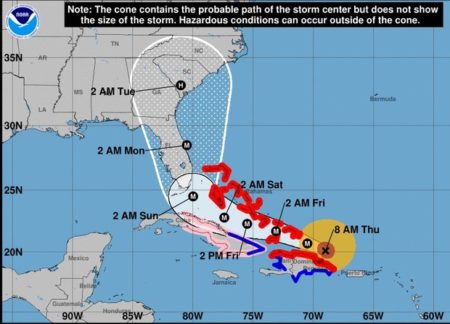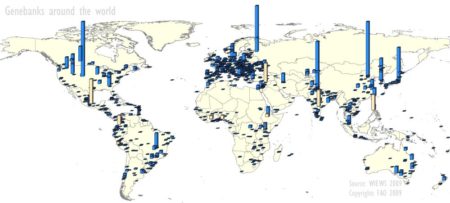- Nutritional variation in baobab (Adansonia digitata L.) fruit pulp and seeds based on Africa geographical regions. Malawi has the most nutritious types.
- A valid name for the Xishuangbanna gourd, a cucumber with carotene-rich fruits. Cucumis sativus L. var. xishuangbannanensis Qi & Yuan ex S.S.Renner, var. nov., if you must know.
- Population genetic analysis of a global collection of Fragaria vesca using microsatellite markers. The Icelandic are different from the other European populatons.
- Spatially explicit multi-threat assessment of food tree species in Burkina Faso: A fine-scale approach. All species threatened everywhere, but especially by climate change.
- Use and Misuse of Material Transfer Agreements: Lessons in Proportionality from Research, Repositories, and Litigation. Horses for courses.
- Temperature increase reduces global yields of major crops in four independent estimates. “Without CO2 fertilization, effective adaptation, and genetic improvement, each degree-Celsius increase in global mean temperature would, on average, reduce global yields of wheat by 6.0%, rice by 3.2%, maize by 7.4%, and soybean by 3.1%.”
Brainfood: Eggplant germplasm, CC threat, Impact metrics, Drought & seeds, Burundi cattle, Wild chickpea, Banana collecting, Bambara groundnut diversity, CIP cryo, USA PGR policy, Australian forages, ILRI seed testing, Nepal intensification, Maize and CC
- World Vegetable Center Eggplant Collection: Origin, Composition, Seed Dissemination and Utilization in Breeding. 3,200 accessions from 90 countries, covering all 3 cultivated species, but not enough wild relatives.
- An integrated framework to identify wildlife populations under threat from climate change. Need to know about landscape connectivity, and genomic data would be useful too.
- Research impact: a narrative review. There are lots of methods, and the indirect ones are sometimes the best.
- Orthodox seeds and resurrection plants: two of a kind? Resurrection plants have reactivated the ancient seed drought tolerance program in vegetative tissues.
- Effect of genetic European taurine ancestry on milk yield of Ankole-Holstein crossbred dairy cattle in mixed smallholders system of Burundi highlands. European ancestry good for milk yield.
- First insights into the biochemical and molecular response to cold stress in Cicer microphyllum, a crop wild relative of chickpea (Cicer arietinum). High altitude Himalayan species found to have frost tolerance.
- Banana Collecting Mission in the Autonomous Region Of Bougainville (AROB), Papua New Guinea. 13 days, 61 accessions. Hard work.
- Morphological Characterisation of Selected African Accessions of Bambara Groundnut (Vigna subterranea (L.) Verdc.). 3 out of 300 out of 1973 have high yield potential. Hard work.
- A large-scale viability assessment of the potato cryobank at the International Potato Center (CIP). They’re getting better at it. Hard work.
- Deep Seeded Problems: A Look At Seed Bank Regulations. The USA should engage internationally on crop diversity conservation. Hard work.
- Australian Pastures Genebank – Temperate Species Regeneration. Hard work.
- Medium-term seed storage of 50 genera of forage legumes and evidence-based genebank monitoring intervals. Hard seeds are hard work.
- Agricultural Land Use Intensity and Determinants in Different Agroecological Regions in Central Nepal Himalaya. Location, location, location.
- Maize Diversity and Climate Change. To investigate the local adaptation of landraces, which you need for adaptation to climate change, you need the synergy that comes from genomics and phenomics in coordinated fashion.
Caribbean genebanks in the firing line
Nibbles: Cyprus seeds, Vietnamese rice, Policy briefs, English breakfast tea, Magic mushrooms, Peanut ontology Moccasin Boots, GeoAgro, Zea archaeology, Oenoarchaology, Old ham, ICRISAT genebank, Coffee podcast, ITPGRFA, Amphicarpaea bracteata
- “It is like archaeology to me. When you save an ancient seed it is like saving a sculpture. It represents the culture, tradition and history. Different types have different traits and intense flavours, like tomatoes years ago for example.”
- Vietnamese specialty rices direct from the genebank. Totally unrelated to this NY Times video-essay on Hmong rice farming.
- Time for tea.
- Making coffee good again. Jeremy explores fair trade and Fair Trade. Do tea now, please, Cherfas.
- ‘Shrooms got magic horizontally, man.
- Why do circus peanuts taste of bananas?
- Bringing back the mouse bean. Which may or may not taste of bananas.
- Cool maize book to round off the Native American crops trifecta.
- Oh no, here’s another one. Pinning down maize domestication.
- Funky ICARDA agroclimatological app.
- REALLY old Italian wine. And something to go with it.
- ICRISAT has a genebank in Zimbabwe too.
- Plant Treaty transfers hit a milestone.
- Policy brief on policy briefs. Homework: do a killer policy brief on any of the above.
New uses for the old orange
I just can’t resist following up yesterday’s Nibble on the history of citrus fruits in the Mediterranean with a couple of recent news stories about unconventional uses for orange peels. To wit, making clothes and environmental restoration. What would those Romans who first introduced the citron and lemon have thought? Let’s just hope we’re able to enjoy this multi-use genus a little while longer.

